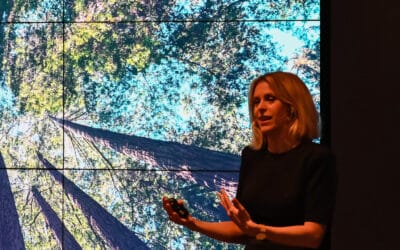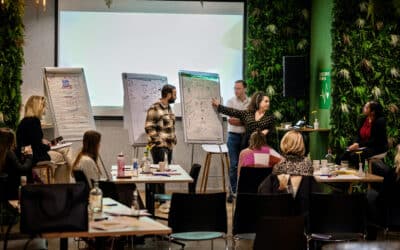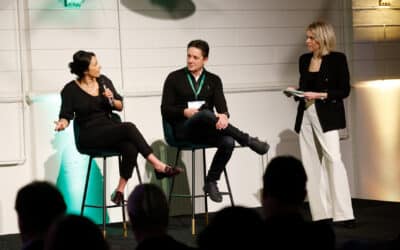In opdracht van Rotterdam Partners geeft Janne Vereijken (Spring Company) in samenwerking met Michael Shanks, professor aan Stanford University, op 31 oktober 2014 een bootcamp in design thinking.
Design Thinking is een innovatietechniek ontwikkeld door het innovatiebedrijf IDEO. In Silicon Valley past 30% van de start-ups design thinking toe. Courses in design thinking op de D.school van Stanford University zijn razend populair onder studenten van zowel bedrijfskundige als technische opleidingen.
Design Thinking legt een sterke nadruk op het betrekken van de gebruiker in het proces, het gebruik van prototyping om tussentijds te testen en een iteratief proces om continu te verbeteren.
Meer informatie:
How can we creatively encounter and manage fundamental and disruptive change?
When faced with disruptive change, existing models for ways of thinking and acting are inadequate. To paraphrase Einstein—“no wicked problem can be solved from the same level of consciousness that created it”. Adaptive and agile attitudes are needed to be able to respond to change. Innovation of products, services and business models is key.
This is why Rotterdam Partners and Michael Shanks, Professor at Stanford University’s Hasso Plattner Institute of Design (the d.school) and member of the International Advisory Board of Rotterdam, have developed a Bootcamp in Design Thinking.
This bootcamp is offered exclusively to the members of the Rotterdam Economic Council
What is this bootcamp?
A fast and furious immersion in design thinking. Rather than just telling you about design thinking, we can show and share the process. This four-hour rollercoaster experience is a popular feature of executive education at the Stanford d.school.
What can you expect to take home?
A clear view of the possibilities of design thinking, related to key concerns in current trends and future scenarios and hands-on experience of best practices in design thinking as a means of coping with change and create desirable futures.
What is Design Thinking?
Within the next two decades new technological and social developments will fundamentally change public systems and private business models. The stakes are high. We live in an interconnected world where the old answers don’t seem to apply, where it’s so easy for a successful business to lose the plot, where skills change and jobs don’t last for life anymore, where choices seem overwhelming. How can we creatively encounter and manage fundamental and disruptive change?
Design is not just about function and form. Design thinking is a way of looking at the world, of thinking, planning, and delivering innovative solutions to messy problems and challenges.
Design thinking helps a business or organization connect better with the people it serves. It matches people’s needs with what is technologically feasible and viable as business strategy or institutional policy. Design thinking is a way of being agile and flexible, putting people first in a world of change. Design thinking, in its open agility, is particularly compatible with advanced methods of scenario planning and strategic foresight. A third of companies in Silicon Valley now adopt a design-based approach.
In North America Stanford, Rotman and now Harvard business schools lead the way in promoting design thinking. There’s tremendous enthusiasm for discussion in the likes of The New Yorker, The Atlantic, Fast Company, New York Times, The Guardian, Wall Street Journal and Harvard Business Review.
Stanford d.school
The design division of Stanford University’s Engineering School has been a key factor in the development and continuing growth and success of Silicon Valley. For three decades and in collaboration with local companies this experience has been distilled into design thinking— a set of principles and practices that lie behind design-based success. Stanford d.school, founded by Hasso Plattner (SAP) and David Kelley (IDEO), is the world famous home of design thinking.
Professor Michael Shanks
Michael is the senior Humanities faculty member in Stanford’s d.school. An anthropologist, design archaeologist and classicist, he brings expertise in history, heritage, culture and the arts to human centered design – the core of design thinking. Over twenty-five years he has applied design thinking to create new disciplinary fields (design studies; heritage studies; material culture studies) and new kinds of cultural practice and organization (through Stanford Humanities Lab and the Revs Program in the Center for Automotive Research at Stanford). A master communicator and teacher, he runs the largest and most popular design class in the university, voted in 2014 by students as one of the ten “must do” classes at Stanford.
Michael’s labs have worked with the automobile industry and with government, educational and non-profit organizations and agencies. He is also a member of Rotterdam’s International Advisory Board and is a curator at large for Rotterdam’s Museum Boijmans van Beuningen.











